Table of Contents
Dedicated to the memory of
Sam Treiman and Sidney Coleman
guides in science, friends in life.
About the Title
THE UNBEARABLE LIGHTNESS OF BEING is the title of a famous novel by Milan Kunderaone of my favorite books. It is about many things, but perhaps above all the struggle to find pattern and meaning in the seemingly random, strange, and sometimes cruel world we live in. Of course Kunderas approach to these problems, through story and art, looks very different from the one Ive taken in this book, through science and (light) philosophy. For me at least, coming to understand the deep structure of reality has helped to make Being seem not merely bearable, but enchantedand enchanting. Hence,
The Lightness of Being.
Lightness of Being. Theres also a joke involved. A central theme of this book is that the ancient contrast between celestial light and earthy matter has been transcended. In modern physics, theres only one thing, and its more like the traditional idea of light than the traditional idea of matter. Hence, The Lightness of Being.
Readers Guide
THE CORE PLAN OF THIS BOOK couldnt be simpler: it is meant to be read chapter by chapter, from beginning to end. But Ive also supplied:
An extensive glossary, so that you dont get tripped up by unfamiliar words or have to search for the place fifty pages back where they were introduced. It can also be mined for cocktail party nuggets. Its even got a few jokes.
Endnotes that elaborate on fine points, follow some important tangents, or provide references.
Three appendices. The first two take discussions in Chapters 3 and 8, respectively, into deeper waters; the third is a first-person account of how a key discovery reported in Chapter 20 occurred.
A web page, itsfrombits.com, where youll find additional pictures, links, and news related to the book.
You can detour to the appendices as their chapters come up, but if you prefer to get on with the story instead, you should still find it comprehensible. I considered offloading more of the material in Chapter 8, but in the end I couldnt bring myself to do it. So in that chapter youll find much ado about Nothing.
PART I
The Origin of Mass
MATTER IS NOT WHAT IT APPEARS TO BE. Its most obvious propertyvariously called resistance to motion, inertia, or masscan be understood more deeply in completely different terms. The mass of ordinary matter is the embodied energy of more basic building blocks, themselves lacking mass. Nor is space what it appears to be. What appears to our eyes as empty space is revealed to our minds as a complex medium full of spontaneous activity.
Getting to It
The universe is not what it used to be, nor what it appears to be.
WHATS IT ALL ABOUT? People reflecting upon the wide world around them, the varied and often bewildering experience of life, and the prospect of death are driven to ask that question. We seek answers from many sources: ancient texts and continuing traditions, the love and wisdom of other people, the creative products of music and art. Each of these sources has something to offer.
Logically, however, the first step in the search for answers should be to understand what it is. Our world has some important and surprising things to say for itself. Thats what this book is about. I want to enrich your understanding of just what it is that you and I find ourselves within.
Senses and World-Models
To begin, we build our world-models from strange raw materials: signal-processing tools designed by evolution to filter a universe swarming with information into a very few streams of incoming data.
Data streams? Their more familiar names are vision, hearing, smell, and so forth. From a modern point of view, vision is what samples the electromagnetic radiation that passes through tiny holes in our eyes, picking up only a narrow rainbow of colors inside a much broader spectrum. Our hearing monitors air pressure at our eardrums, and smell provides a quirky chemical analysis of the air impinging on our nasal membranes. Other sensory systems give some rough information about the overall acceleration of our body (kinesthetic sense), temperatures and pressures over its surface (touch), a handful of crude measures of the chemical composition of matter on our tongue (taste), and a few other odds and ends.
Those sensory systems allowed our ancestorsjust as they allow usto construct a rich, dynamic model of the world, enabling them to respond effectively. The most important components of that world-model are more-or-less stable objects (such as other people, animals, plants, rocks,... the Sun, stars, clouds,...) some of them moving around, some dangerous, some good to eat, and othersa select and especially interesting fewdesirable mates.
Devices to enhance our senses reveal a richer world. When Antonie van Leeuwenhoek looked at the living world through the first good microscopes in the 1670s, he saw totally unsuspected, hidden orders of being. In short order he discovered bacteria, spermatozoa, and the banded structure of muscle fibers. Today we trace the origin of many diseases (and of many benefits) to bacteria. The basis of heredity (well, half of it) is found within the tiny spermatozoa. And our ability to move is anchored in those bands. Likewise, when Galileo Galilei first turned a telescope to the sky in the 1610s, new riches appeared: he found spots on the Sun, mountains on the Moon, moons around Jupiter, and multitudes of stars in the Milky Way.
But the ultimate sense-enhancing device is a thinking mind. Thinking minds allow us to realize that the world contains much more, and is in many ways a different thing, than meets the eye. Many key facts about the world dont jump out to our senses. The parade of seasons, in lock-step with the yearly cycle of sunrise and sunset, the nightly rotation of stars across the sky, the more intricate but still predictable motions of the Moon and planets, and their connection with eclipsesthese patterns do not leap to the eye, ear, or nose. But thinking minds can discern them. And having noticed those regularities, thinking minds soon discover that they are more regular than the rules of thumb that guide our everyday plans and expectations. The more profound, hidden regularities lend themselves to counting and to geometry: in short, to mathematical precision.
Other hidden regularities emerged from the practice of technologyand, remarkably, of art. The design of stringed musical instruments is a beautiful and historically important example. Around 600 BCE, Pythagoras observed that the tones of a lyre sound most harmonious when the ratio of string lengths forms a simple whole-number fraction. Inspired by such hints, Pythagoras and his followers made a remarkable intuitive leap. They foresaw the possibility of a different kind of world-model, less dependent on the accident of our senses but more in tune with Natures hidden harmonies, and ultimately more faithful to reality. That is the meaning of the Pythagorean Brotherhoods credo: All things are number.
The scientific revolution of the seventeenth century began to validate those dreams of ancient Greece. That revolution led to Isaac Newtons mathematical laws of motion and of gravity. Newtons laws permitted precise calculation of the motion of planets and comets, and provided powerful tools for describing the motion of matter in general.

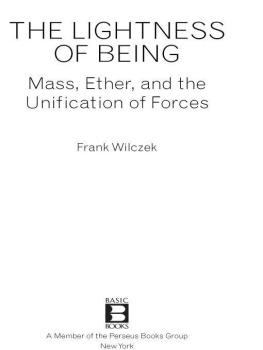
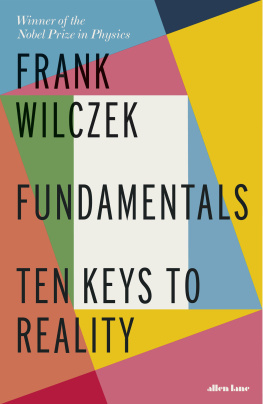
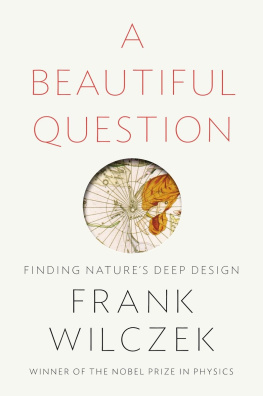


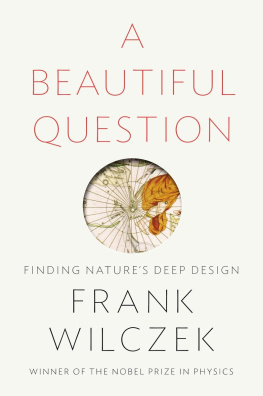
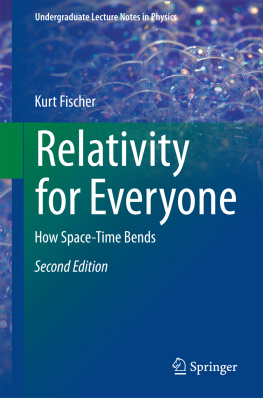

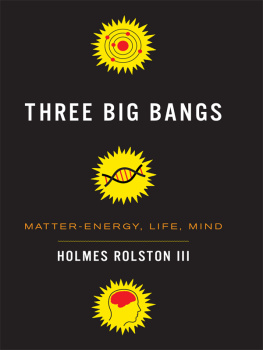
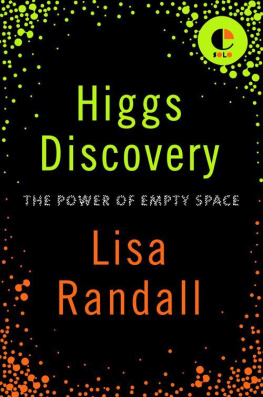

 Lightness of Being.
Lightness of Being.